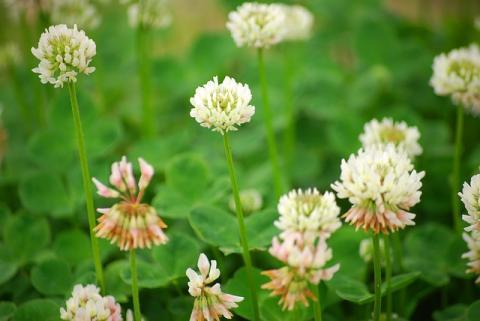
Have you tested your soil only to find it contaminated with chemical or heavy metals? Paying for cleanup can be super expensive. One cheaper yet effective natural method for dealing with this challenge is by growing plants that work to remove specific undesired elements from your soil.
Check out these 10 plants to heal your contaminated soil!
With the rising of unmindful industry practices near urban areas usually comes the increase of contaminated soil. This occurs when soils contain total concentrations of certain elements or chemicals that are above normal for soil in a particular area. It can be sometimes due to natural causes, but it is often a result of industrial activity, human-made chemicals, or improper disposal of waste. Contaminated soil can be toxic to plants, humans and animals. Some common contaminants may include metals like lead, arsenic, zinc, copper, mercury, cadmium, chromium, and uranium. Polychlorinated Biphenyls (PCBs), Polycyclic Aromatic Hydrocarbons (PAHs), and Dichlorodiphenyltrichloroethane (DDT) are some of the common man-made chemicals that are likely to be found in contaminated soil as well.
Luckily, there’s an all-natural fix to this contamination: plants Phytoremediation is a method that uses plants to remove pollutants in soil, water, and air. Here are a few types of plants used for phytoremediation of soil.
1. White Clover (Trifolium repens)
White clover is a plant in the legume family that is often mixed with other grasses for phyto-remediation. The herbaceous perennial plant has been used to remove hydrocarbons and polychlorinated biphenyls (PCBs) from contaminated soil. Clover grows best with soil that is well drained and moist. It thrives best in full to moderate sun.
2. Sunflower (Helianthus annuus)
This bright, common flower from the Asteraceae family is used for extraction of metals such as lead, zinc, cadmium, nickel, chromium, uranium, and copper. In addition, it is said to show promise in getting rid of Polycyclic Aromatic Hydrocarbons (PAHs). They are easy to grow and are wonderful at brightening up gardening spaces.
3. White Lupine (Lupinus albus)
White Lupine is a nitrogen fixing legume sometimes called a field lupine. It has been used for soil contaminated with arsenic because it is said to pick up the arsenic through its root system. These particular flowers do best in places that have cooler climates in winter.
4. Indian Mustard (Brassica juneca)
Indian Mustard, otherwise known as mustard greens, contains various species that have been known to remove metals such as lead, zinc, nickel, copper, chromium, cadmium, and uranium. This plant has been used for eliminating contamination in water as well. Indian Mustard is easy to grow, and it does best in rich, well-drained, well-prepared soil.
5. Violets (Viola)
Violets come in many varieties, and are flowering plants in the violet family, Violaceae. They are considered to be effective in absorbing high concentrations of metals. Violets are an easy to grow annual, and you will often find them growing in the wild.
6. Mulberry (Morus rubra)
The mulberry tree is said to be one of the few trees that produce phenolic compounds. These particular compounds are known to stimulate PCB-degrading bacteria, which help to get rid of this chemical. Mulberry trees are used for the degradation of Polycyclic Aromatic Hydrocarbons (PAHs) as well. Under ideal conditions, mulberries can grow quickly. Mulberries like full sun and moist soil that is deep enough to support its extensive root structure.
7. Honey Locust (Gleditsia triacanthos)
Honey Locust is a deciduous tree in the Fabaceae family that has been used for the extraction and removal of lead. They are sun-loving trees that grow fairly fast and prefer rich, moist soil.
8. Paul’s Scarlet Rose (Rosa)
Paul’s scarlet roses are said to help remove organic contaminants in soil. There are many kinds of different varieties of this rose. This type of shrub can withstand climates with freezing temperatures. It likes partial sun and requires moderate watering.
9. Tall Fescue (Festuca arundinacea)
This cool-season perennial is a common grass used for phytoremediation. It is often used for degrading PAHs and Pyrene. The grass is very easy to grow and spread in large areas. It does best in the spring and fall when temperatures are cooler.
10. Brake Fern (Pteris)
The Brake Fern is a sun-loving plant used for the purpose of absorbing a heavy metal known as arsenic. Arsenic is a popular ingredient used in such things as pesticides, wood preservatives, fireworks, metals and electronics. Brake Ferns are said to remove arsenic by pulling it out of the soil through their root systems. These plants may be slow-growing, but they are considered to be very easy to care for.
The first step in using phytoremediation is to first test and find out what contaminants exist in your soil. From there, you can begin to strategize and choose which plants are the best to use. Removing contaminants through the use of plants can be a slow and challenging process, but it can also be very effective as well. Always make sure to retest your soil before planting.
Stay tuned for more organic home gardening tips and ideas!








